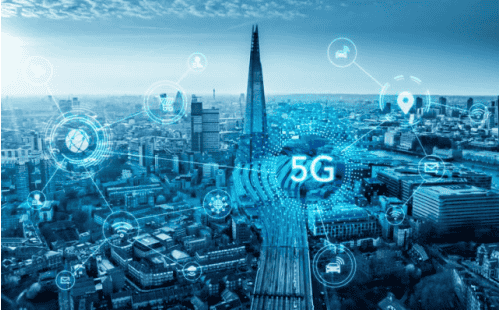LTE vs 4G vs 5G: An Overview

Every day, communication technology sees minor improvements, but occasionally there are significant, even revolutionary ones.
We all have mobile connections and are able to access the internet, but a crucial concept that few people are aware of is the distinction between words like 3G, 4G, LTE, and 5G. There's a strong possibility that you've heard of LTE vs 4G, and the future 5G if you're a frequent mobile user. What do each of these terms mean, and how do they measure up to one another?
Without further ado, let's review the various varieties of mobile internet service and their differences.
What is LTE?
LTE is an abbreviation for Long Term Evolution. It's a word for the specific type of 4G that provides a fast mobile Internet experience. It is commonly referred to as LTE vs 4G.
Putting 4G in front of it was a marketing trick to make it more recognized by the consumer. It is a significant improvement over 3G, but not as good as real 4G.
The pool of potential devices that require access to mobile services is fast expanding, not to mention the expansion of the internet itself, therefore new technology is needed to handle that amount of data successfully. This is where 5G becomes quite appealing. Also, Read: Best Selling 2022 Released Mobile Phones
4G vs LTE which is faster?
The primary distinction between 4G and LTE is that 4G is faster than LTE. This is because 4G meets the technological specifications assigned to it, whereas LTE data transmission speed is only a stopgap measure developed until actual 4G speed is established.
LTE provides just 100 Mbps, whereas genuine 4G provides up to 1,000 Mbps. However, when we look at LTE-A speeds, the discrepancy disappears because it also provides 1,000 Mbps. As a result, there is no clear response because it depends on whether you are utilizing LTE or LTE-A. Because most networks support LTE-A, the majority of consumers benefit from fast upload and download speeds.
What is 4G?
The International Telecommunications Union (ITU) established the 4G (Fourth Generation) specification in 2008. 4G is well recognized for its broadband capabilities and far higher speeds than the previous 3G, which introduced data connectivity into the cellular sector.
A 4G or 4G LTE phone takes advantage of the standards of this generation. Many 4G phones today are 5G capable but will continue to utilize 4G if the network is stronger or 5G is unavailable. If you are concerned about the strength of your signal, investing in a signal booster is your best bet.
How Fast is 4G?
The ITU standard required a minimum download speed of 100 Mbps and a maximum download speed of 1Gbps, which was unattainable at the time. It took years for US carrier networks to fulfill these goals.
To qualify for real 4G, your wireless network must be capable of downloading at a rate of at least 100 Mbps. To distinguish it from 4G LTE, several carriers have labeled it as 4G LTE-A (Verizon), 5Ge (AT&T), or 4G LTE+.
What is 5G?
The ITU has established a new standard known as 5G. This fifth-generation network is intended to link nearly everyone and everything by providing faster speed, lower latency, increased network capacity, and increased reliability. To accomplish this, it makes use of new technology and expands into new frequency spectrums.
Low-band 5G, mid-band 5G, and high-band 5G are the three variants of 5G, each having its own set of speeds and latency rates. As with 4G, not all 5G is genuine 5G. Also, Check: Best 5G Smartphone Under 15000: Buyer’s Guide
How Fast is 5G?
5G will drastically transform download speeds and the way devices stay connected. 5G is expected to provide a maximum of 20 Gbps and a minimum of 1 Gbps in its most ideal form. However, because there are so many distinct types of 5G, speeds vary greatly.
Low-band 5G speeds are marginally faster than 4G speeds. As you advance up the spectrum, the signal's range reduces while its speed increases. Overall, whether linked to the higher end of the 5G mid-band or the mmWave, you'll achieve close to actual 5G speeds.
LTE vs 5G
5G stands for Fifth Generation, a set of technical requirements defined by the International Telecommunication Union.
LTE, on the other hand, stands for Long Phrase Evolution and is primarily a marketing term that describes the final climb of a network's journey toward genuine 5G.
When comparing LTE to 5G, latency will be one of the most dramatic improvements. Latency is the time it takes for data to leave a device and arrive at its destination. 5G will have less than 10-millisecond latency, compared to 4G LTE's typical round-trip delay of roughly 50 milliseconds.
For the general public, this means improved live streaming services and possibly improved mobile gaming. However, for businesses, this opens up a whole new world of possibilities. Organizations could employ private 5G networks with 1 to 10-millisecond latency to control autonomous robotics infrastructure, gadgets with AR/VR capabilities for remote assistance, or ground vehicles with near-instantaneous response.
While those possibilities are still a ways off, 5G networks enable them to be constructed on top of a private cellular network that can support them.
4G vs 5G
Speed is frequently used to differentiate 5G from 4G. Although 4G may already attain maximum speeds of up to 100 Mbps, real-world performance is typically limited to 35 Mbps.
5G has the potential to be 100 times faster than 4G, with a theoretical top speed of roughly 20 Gbps and actual real-world rates ranging from 50 Mbps to 3 Gbps. There are three primary types of 5G, each with its unique speed. Low-band 5G is slightly faster than 4G, with speeds ranging from 50 to 250 Mbps. The fastest form of 5G, known as high-band 5G, can reach 3 Gbps.
Lower latency, improved speed, higher density, expanded capacity, and energy efficiency distinguish 4G vs LTE from 5G. In addition, 5G has better spectral efficiency, reliability, mobility, and security than 4G LTE. Hope this article helped you to find the difference between the three terms and find out what this means for your cell signal.



